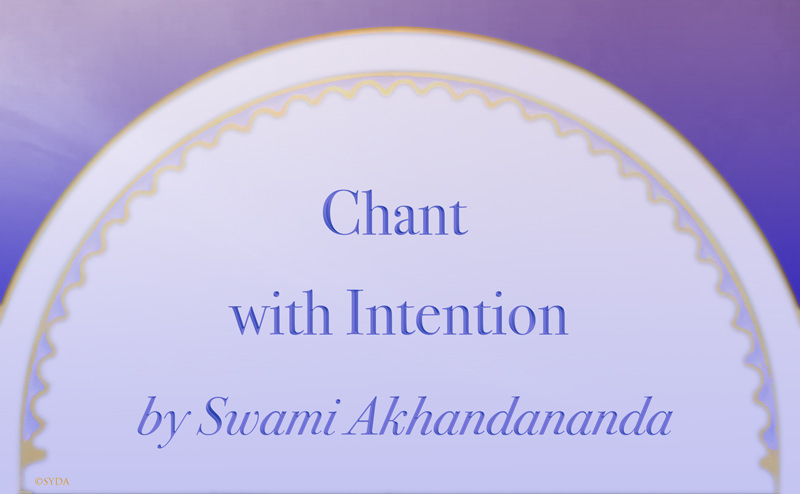Chant with Intention
by Swami Akhandananda
“Be in the Temple” Satsang
Live Video Stream in the Siddha Yoga Universal Hall
Saturday, May 2, 2020

The “Be in the Temple” satsang on Saturday, May 2, was focused on the Siddha Yoga practices of namasankirtana—chanting the divine name—and meditation. Swami Akhandananda, the host and teacher for the satsang, began by explaining the meaning of the words of the chant, so that people could bring greater awareness and intentionality to their chanting. The following are Swami ji’s words:
Namaste.
Tonight we will be chanting sāmba sadāshiva sāmba sadāshiva, sāmba sadāshiva hara śambho.
The melody of this chant is in the Kafi raga, a melodic pattern which evokes the qualities of lightness and joy. This chant is in praise of Lord Shiva, the supreme Self of all. In the refrain we extol the Lord as Sāmba Sadāshiva—the eternal Shiva who is continuously present within us and is always one with his creative power, the divine Shakti, referred to here as the goddess Amba. We invoke the Lord as Hara, the one who removes the ignorance veiling our true nature, who dissolves our sense of limitation and reveals our freedom. And we praise the Lord as Shambhu, the bestower of all happiness.
So, the meaning of the refrain is:
O eternal Shiva, united with the Goddess Amba!
O Hara, remover of ignorance,
and Shambhu, bestower of all happiness!
Then, in the first verse we sing more names of the Lord:
he girijāvara
he girijāvara
he girijāvara hara śambho
We address Lord Shiva as Girijāvara. The word giri means “mountain”, referring here to the Himalayas, where Lord Shiva has his abode. Girijāvara refers to Shiva as the beloved of mountain-born Parvati, the gentle and nurturing aspect of the divine Shakti.
The next verse is
he karuṇākara
he karuṇākara
he karuṇākara hara śambho
The Sanskrit word karuṇā means “compassion”, and it refers to the supremely merciful, tender, caring, and loving nature of Lord Shiva. Karuṇākara describes Shiva as the embodiment of compassion, and as the one who showers divine mercy; it conveys the Lord’s infinite care and empathy for each living being. By singing Karuṇākara, we invoke the Lord who exists in our hearts as unconditional love and grace. It is vital to find ways to express compassion, empathy, and kindness toward others, especially those who are in need of support. Compassion nurtures and imparts strength in the face of adversity. It calls forth our true humanity.
The third verse is
he mṛtyuñjaya saccitsukhamaya
he karuṇāmaya hara śambho
Mṛtyuñjaya is a term combining two words: mṛtyu, which means “death,” and jaya, which means “victorious” or “conquering.” Thus, Mṛtyuñjaya refers to Shiva as the one who conquers death, the Lord who is immortal. When we recognize our true Self, which exists beyond the physical body and the ever-changing world, we can triumph over death.
Another exquisite name for Lord Shiva in this verse is Saccitsukhamaya—the one who is “being” or sat, “consciousness” or chit, and “bliss” or sukha. Saccitsukhamaya praises the Lord whose nature is being, consciousness, and bliss.
The complete translation of this chant is
O eternal Shiva, united with the Goddess Amba!
O Hara, remover of ignorance,
and Shambhu, bestower of all happiness!
You are Girijāvara, the beloved of mountain-born Parvati.
You are Karuṇākara, the embodiment of compassion.
You are Mṛtyuñjaya, the conqueror of death.
Your essence is being, consciousness and bliss.
On the Siddha Yoga path, Gurumayi teaches us that there is great power in the intentions that we make. I encourage you to chant with the intention that these divine qualities of Lord Shiva—compassion, happiness, immortality, being, consciousness, and bliss—blossom in your heart and in the hearts of people everywhere.



